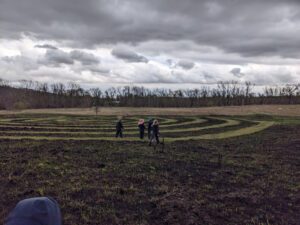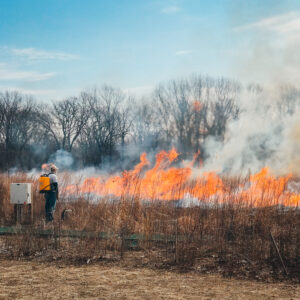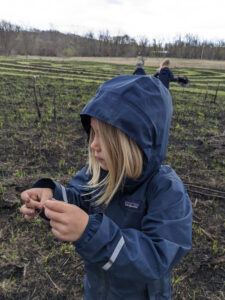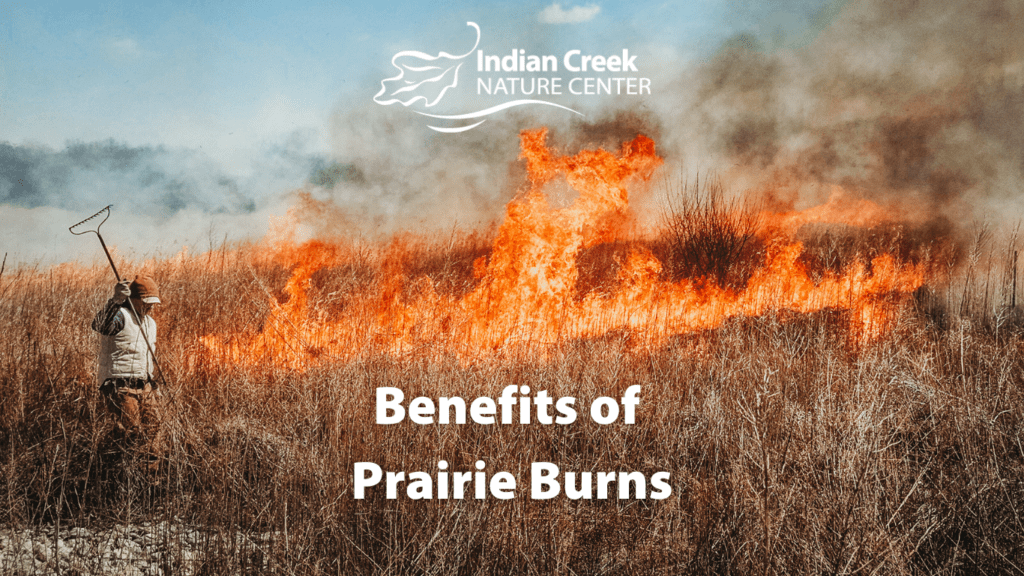
On a cool spring day, the preschoolers at Creekside Forest School noticed part of the Stimple Prairie, which held their beloved labyrinth, looked different. The tall grasses were gone and the ground was a shimmering shade of black. As preschoolers do, they began to ask many questions.
“Why would you burn a healthy prairie?” is a great question, no matter the age (or cuteness factor) of the person asking it. Since we here at Indian Creek Nature Center love feeding curiosity, let’s dive into why prescribed prairie burns are beneficial, when the best time is to burn and who can contribute to a safe burn.
Why Burn a Healthy Prairie
Before 99% of Iowa’s prairie was destroyed to make way for the farmland, highways and cities in their place today, prairie fires were common. The fires were not prescribed as they are today, but were started from lightning strikes and from Native Americans, who used fire as a way to manage their surroundings. Today, since prairies are now much smaller and surrounded by personal property, the burns must be closely controlled. Still, the native prairie plants thrive from occasional burning. Indian Creek Nature Center has built this practice into our land management plans to maximize the ongoing health of our restored prairies.
Prescribed burning has a variety of benefits for prairie life:
- Maintain or restore desired plants within a plant community
- Reduce excess plant litter
- Enhance seed production
- Suppress invasive species
- Improve wildlife habitat
- Enhance plant diversity
Prescribed burns bring these benefits to the prairie by recreating the cyclical burning patterns found in nature.
When To Burn A Prairie

Prairies thrive best when they are burned every three to four years. Indian Creek Nature Center staff rotates our burns to optimize the health of all our prairies.
ICNC plans prescribed burns during the spring and fall seasons because it increases the chances that we’ll have the best weather conditions. The main factors include wind speed, air temperature and soil moisture.
Wind speed needs to be fast enough to push the fire but slow enough for it to be controlled. Steady wind between 4 and 15 mph is best. The air temperature needs to be above 32 degrees to prevent water used to suppress the fire from freezing, and temperatures above 80 degrees Fahrenheit can cause the fire to flair up and be challenging to control. The soil should be moist to the touch.
As you can imagine, predicting when all these factors will align during an Iowa spring or fall involves a lot of luck. ICNC will cancel scheduled burns if the weather does not allow staff and volunteers to have safe and effective burning conditions. And we thank our volunteers for their flexibility when a burn must be canceled or rescheduled.
ICNC will be conducting prescribed burns throughout November and again in the spring. If you are interested in volunteering for one of these burns, please let us know at this sign up or by emailing us.
Prairie Burns Feed Curiosity
 After the successful spring burn of the Stimple Prairie, the Creekside Forest School students and teachers explored the freshly burned prairie. As they searched they discovered snail shells and snakeskins. Their curiosity was well-fed. They discovered more about their world, made priceless memories, and became a little closer to nature.
After the successful spring burn of the Stimple Prairie, the Creekside Forest School students and teachers explored the freshly burned prairie. As they searched they discovered snail shells and snakeskins. Their curiosity was well-fed. They discovered more about their world, made priceless memories, and became a little closer to nature.
While the children awed at the snakeskins and filled their pockets with snail shells, under their boots there were roots that had been strengthened by fire and ready to sprout anew.
Today, the prairie is healthy and full of life. It now welcomes a new class of preschoolers who trailblaze through the tall grasses catching bugs in their nets — providing students with a sense of wonder all over again.
It’s amazing to see how when we take care of nature, it often finds a way of taking care of us.

